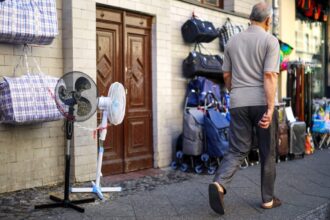As climate concerns mount, organizers face growing questions about contingency plans for potential wildfire smoke disruptions at the 2026 FIFA World Cup matches scheduled across Canada’s host cities.
The increasing frequency and severity of wildfires across North America has raised serious questions about potential air quality challenges for the upcoming 2026 FIFA World Cup, particularly for Canadian host cities. With Toronto, Vancouver, and other urban centers having experienced significant smoke impacts in recent years, environmental experts are calling for robust contingency planning to address what could become a major tournament disruption.
“What we’re witnessing is a clear pattern of intensifying wildfire seasons that increasingly affect major population centers,” explains Dr. Eleanor Matthews, climate scientist at the University of British Columbia. “The timing of the World Cup in June and July aligns perfectly with peak wildfire season in many regions of Canada and the United States.”
Last summer, Toronto experienced several days where the Air Quality Index exceeded 150—considered unhealthy for all population groups—due to smoke drifting from wildfires burning hundreds of kilometers away. Vancouver faced similar challenges, with iconic skyline views completely obscured during the worst episodes.
FIFA and the tournament organizing committee have acknowledged these concerns but have yet to release specific protocols for dealing with potential air quality emergencies. “We are working closely with environmental agencies and health authorities in all host countries to develop comprehensive contingency measures,” stated FIFA spokesperson Jean Renault in a written response to inquiries.
Some potential measures being considered include installing advanced air filtration systems in stadiums, creating indoor training facilities with controlled environments, and developing clear thresholds for when matches would need to be postponed or relocated. However, the logistics of rescheduling games in a tightly packed international tournament present significant challenges.
Sports medicine specialists emphasize that high-level athletic performance becomes not just difficult but potentially dangerous when air quality deteriorates. “Athletes pushing themselves to maximum exertion in smoke-filled air face increased risks of respiratory distress and reduced oxygen uptake,” notes Dr. Samantha Chen, sports medicine specialist at Toronto General Hospital. “For elite athletes, even small decrements in lung function can significantly impact performance.”
Environmental justice advocates have also pointed out that wildfire impacts extend far beyond the tournament itself. “While contingency plans for millionaire athletes are important, we need to recognize that vulnerable communities face these conditions without the luxury of postponement or relocation,” says Marcus Thompson of Climate Action Toronto. “The World Cup spotlight offers an opportunity to highlight climate adaptation needs for all Canadians.”
Cities like Vancouver have begun investing in “clean air shelters” and public early warning systems following recent wildfire seasons. Toronto is similarly updating its extreme weather response protocols to include specific measures for wildfire smoke events.
The organizing committee has promised to release detailed environmental contingency plans by early 2025, but many observers question whether enough attention is being paid to what could become a defining challenge of the tournament. With World News outlets increasingly covering the intersection of climate change and major sporting events, the pressure for transparent planning continues to mount.
As Canada prepares to welcome the world’s most prestigious soccer tournament, the question remains: will organizers be prepared if the changing climate delivers another summer of smoke? The answer may determine not just the success of individual matches, but the tournament’s broader legacy in an era of climate uncertainty.

























